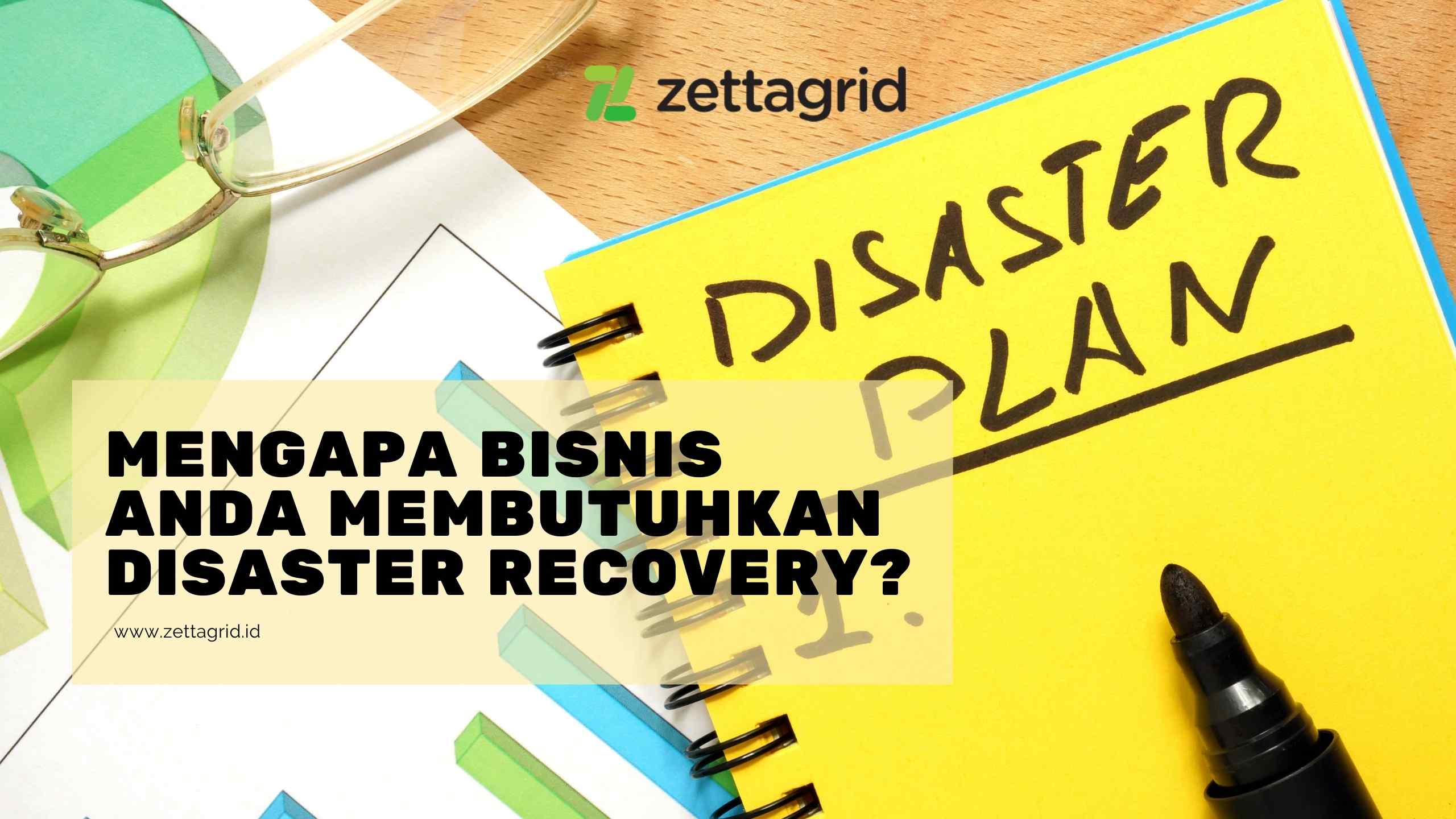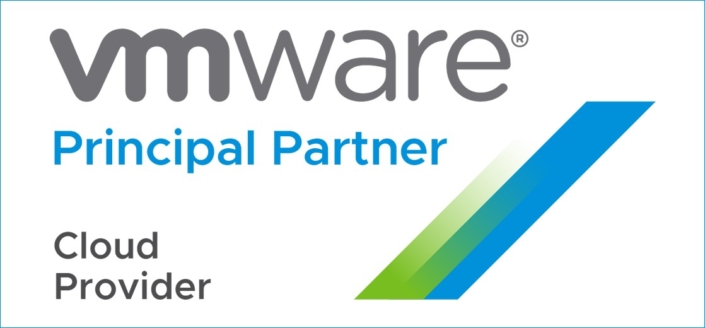Disaster Recovery: Pengertian DRC, Langkah, Plan, dan Pentingnya bagi Perusahaan

Disaster recovery adalah proses pemulihan data, sistem, dan operasional bisnis yang terganggu akibat bencana alam, serangan siber, kesalahan manusia, atau kejadian lain yang tidak terduga. Disaster recovery bertujuan untuk mengurangi dampak negatif dari bencana dan memastikan kelangsungan bisnis dengan cara yang cepat dan efisien. Dalam artikel ini, kita akan membahas tentang apa itu disaster recovery system, apa itu DC dan DRC, langkah-langkah disaster recovery plan, dan mengapa perusahaan membutuhkan disaster recovery.
Apa itu disaster recovery system?
Disaster recovery system adalah sistem yang dirancang untuk mendukung proses disaster recovery. Sistem ini mencakup perangkat keras, perangkat lunak, jaringan, dan layanan yang digunakan untuk melakukan backup, replikasi, penyimpanan, pemulihan, dan pengujian data dan sistem bisnis. Disaster recovery system dapat berupa sistem on-premise, cloud, atau hybrid, tergantung pada kebutuhan dan preferensi perusahaan.
Beberapa contoh disaster recovery system adalah:
- VMware Cloud Disaster Recovery, yang merupakan layanan disaster recovery as a service (DRaaS) yang memungkinkan perusahaan untuk melakukan backup dan pemulihan data dengan biaya yang efektif dan fleksibel.
- Veeam Backup Replication atau dikenal dengan VBR merupakan produk Veeam yang memiliki fitur solusi Backup dan Replikasi. Dalam solusi ini, Veeam memastikan proteksi data yang aman dengan solusi 4-in-1 yaitu kombinasi backup, replikasi, snapshots, dan CDP.
- Zerto SecondSite adalah solusi replikasi pemulihan bencana (DRaaS) real-time yang dibangun di atas platform Zerto pemenang penghargaan yang menyediakan situs pemulihan, sinkronisasi data, aksesibilitas, dan aktivasi untuk sebagian atau seluruh lingkungan virtual Anda.
Perbedaan DC dan DRC
DC adalah singkatan dari data center, yaitu fasilitas fisik yang digunakan untuk menyimpan, memproses, dan mendistribusikan data dan sistem bisnis. Data center biasanya dilengkapi dengan perangkat keras, perangkat lunak, jaringan, keamanan, pendingin, dan sumber daya listrik yang diperlukan untuk menjalankan operasional bisnis.
DRC adalah singkatan dari disaster recovery center, yaitu lokasi alternatif yang digunakan untuk memulihkan data dan sistem bisnis yang terganggu akibat bencana. DRC biasanya memiliki infrastruktur yang mirip atau setara dengan data center utama, sehingga dapat mengambil alih fungsi dan beban kerja dari data center utama saat terjadi bencana. DRC dapat berupa lokasi fisik yang dimiliki atau disewa oleh perusahaan, atau layanan cloud yang disediakan oleh penyedia layanan.
Jenis-jenis disaster recovery
Terdapat empat jenis disaster recovery yang paling umum digunakan, yakni yang berbasis virtual, jaringan, pusat data, dan cloud. Berikut adalah penjelasan singkat tentang masing-masing jenis disaster recovery:
- Disaster recovery virtual adalah jenis disaster recovery yang mengandalkan metode virtualisasi dalam proses pemulihan data. Pusat data virtual ditempatkan untuk menggantikan server fisik sebagai perangkat utama. Tak jarang, metode ini juga didukung oleh sejumlah portal virtualisasi yang menghadirkan layanan backup dan restore. Ketika terjadi bencana atau kerusakan, sistem pemulihan virtual akan segera melakukan tindakan penyelamatan data tanpa menunggu server fisik menyelesaikan beban kerjanya. Oleh karena itu, jenis recovery ini dianggap lebih menguntungkan dari segi efisiensi waktu.
- Disaster recovery jaringan adalah jenis disaster recovery yang berpusat pada pemulihan jaringan. Metode ini berkembang dari asumsi bahwa jaringan suatu perusahaan merupakan aspek penting yang harus turut diselamatkan saat bencana melanda. Prosedur pemulihan jaringan umumnya melibatkan koneksi dengan anggota tim IT, penggantian perangkat jaringan, serta sejumlah usaha terkait lain untuk memulihkan konektivitas yang sempat terputus.
- Disaster recovery pusat data adalah jenis disaster recovery yang berpusat pada data center atau pusat data perusahaan. Metode ini melibatkan pengembangan fasilitas komputerisasi yang digunakan untuk menyimpan, memproses, dan mendistribusikan data dan sistem bisnis. Prosedur pengembangannya meliputi pengamanan lokasi, pemantapan perangkat dan pegawai, serta pengaturan HVAC ruangan (heating, ventilation, dan air conditioning). Disaster recovery pusat data dianggap sebagai solusi paling aman dan efektif bagi sebagian besar perusahaan. Namun, waktu pengembangan yang cukup panjang serta banyaknya unsur penting yang harus dilibatkan membuat jenis manajemen bencana ini sering dirasa kurang praktis.
- Disaster recovery cloud adalah jenis disaster recovery yang berbasis cloud. Metode ini memanfaatkan layanan cloud yang disediakan oleh penyedia layanan pihak ketiga untuk menyimpan dan memulihkan data dan sistem bisnis. Dengan menggunakan disaster recovery cloud, perusahaan tidak perlu mengembangkan fasilitas sendiri atau mempekerjakan tenaga ahli. Seluruh prosedur pengamanan data pun dijalankan secara lebih praktis.
Manfaat disaster recovery untuk perusahaan
Perusahaan membutuhkan disaster recovery karena alasan-alasan berikut:
- Untuk mencegah atau meminimalkan kerugian data yang dapat mengakibatkan hilangnya informasi penting, pelanggaran privasi, atau tuntutan hukum.
- Untuk mencegah atau meminimalkan gangguan operasional yang dapat mengakibatkan menurunnya produktivitas, kualitas, atau layanan.
- Untuk mencegah atau meminimalkan kerusakan reputasi yang dapat mengakibatkan kehilangan kepercayaan, loyalitas, atau pelanggan.
- Untuk memenuhi persyaratan hukum, regulasi, atau kontrak yang mengharuskan perusahaan untuk memiliki rencana kontinuitas bisnis dan disaster recovery.
- Untuk meningkatkan daya saing dan nilai bisnis dengan menunjukkan kemampuan perusahaan untuk bertahan dan pulih dari bencana.
Berapa lama proses recovery data?
Proses recovery data adalah proses untuk mengembalikan data yang rusak, hilang, atau tidak dapat diakses ke kondisi sebelumnya. Proses ini dapat dilakukan dengan menggunakan perangkat lunak, perangkat keras, atau layanan pemulihan data. Lama proses recovery data tergantung pada beberapa faktor, seperti jumlah dan jenis data yang akan dipulihkan, media penyimpanan yang digunakan, metode pemulihan yang dipilih, dan kondisi fisik atau logis dari data yang rusak. Secara umum, proses recovery data dapat memakan waktu dari beberapa menit hingga beberapa jam atau bahkan hari.
RTO dan RPO dalam disaster recovery
RTO (Recovery Time Objective) dan RPO (Recovery Point Objective) adalah dua konsep kunci dalam merancang strategi disaster recovery dan manajemen risiko data. Masing-masing konsep memiliki peran dan arti yang berbeda dalam konteks perlindungan data dan pemulihan setelah bencana atau kejadian tak terduga lainnya.
RTO, atau Recovery Time Objective, adalah waktu maksimal yang dibutuhkan untuk memulihkan data dan sistem bisnis setelah terjadi bencana. RTO menunjukkan seberapa cepat perusahaan harus dapat mengembalikan operasional bisnis ke kondisi normal atau minimal yang dapat diterima. RTO biasanya diukur dalam satuan jam, menit, atau detik.
RPO, atau Recovery Point Objective, adalah jumlah data maksimal yang dapat hilang atau rusak akibat bencana. RPO menunjukkan seberapa sering perusahaan harus melakukan backup data dan sistem bisnis untuk meminimalkan kerugian data. RPO biasanya diukur dalam satuan jam, menit, atau detik.
Berikut adalah beberapa contoh RTO dan RPO dalam disaster recovery untuk berbagai jenis data dan sistem bisnis:
- Data dan sistem keuangan: Data dan sistem keuangan adalah data dan sistem yang sangat kritikal bagi perusahaan, karena berhubungan dengan transaksi, pembayaran, laporan, dan audit. Data dan sistem keuangan harus memiliki RTO dan RPO yang sangat rendah, misalnya RTO 15 menit dan RPO 5 menit, untuk meminimalkan kerugian finansial, pelanggaran hukum, atau kerusakan reputasi.
- Data dan sistem operasional: Data dan sistem operasional adalah data dan sistem yang mendukung proses bisnis sehari-hari, seperti produksi, distribusi, pemasaran, dan layanan. Data dan sistem operasional harus memiliki RTO dan RPO yang moderat, misalnya RTO 1 jam dan RPO 15 menit, untuk meminimalkan gangguan operasional, menurunnya kualitas, atau kehilangan pelanggan.
- Data dan sistem administratif: Data dan sistem administratif adalah data dan sistem yang berkaitan dengan fungsi-fungsi internal perusahaan, seperti sumber daya manusia, akuntansi, dan pengadaan. Data dan sistem administratif dapat memiliki RTO dan RPO yang lebih tinggi, misalnya RTO 4 jam dan RPO 1 jam, karena dampaknya terhadap bisnis tidak sebesar data dan sistem lainnya.
Langkah-langkah disaster recovery plan
Disaster recovery plan adalah dokumen tertulis yang berisi langkah-langkah yang harus diambil oleh perusahaan dalam proses disaster recovery. Disaster recovery plan harus mencakup identifikasi risiko, analisis dampak, strategi pemulihan, rencana komunikasi, dan prosedur pengujian dan pembaruan. Berikut adalah langkah-langkah umum dalam menyusun disaster recovery plan:
- Melakukan analisis risiko untuk mengidentifikasi potensi bencana yang dapat mempengaruhi data dan sistem bisnis, seperti bencana alam, serangan siber, kesalahan manusia, dll.
- Melakukan analisis dampak untuk menentukan dampak dari setiap bencana terhadap data dan sistem bisnis, seperti kerugian finansial, reputasi, dan data, serta menetapkan prioritas pemulihan berdasarkan kritikalitas data dan sistem.
- Menentukan strategi pemulihan untuk setiap bencana, seperti metode backup, lokasi DRC, teknologi pemulihan, RPO (recovery point objective), dan RTO (recovery time objective).
- Menyusun rencana komunikasi untuk menginformasikan karyawan, pelanggan, mitra, dan pihak terkait lainnya mengenai proses disaster recovery, termasuk kontak darurat, tanggung jawab, dan eskalasi.
- Menyusun prosedur pengujian dan pembaruan untuk memastikan bahwa disaster recovery plan berfungsi dengan baik dan sesuai dengan kondisi bisnis yang berubah, termasuk melakukan simulasi bencana, mengevaluasi hasil, dan merevisi rencana jika perlu.
Jika Anda tertarik untuk mengetahui lebih lanjut tentang disaster recovery dan bagaimana Anda dapat melindungi data dan sistem bisnis Anda dari bencana, Anda dapat menghubungi penyedia layanan disaster recovery yang profesional dan berpengalaman. Zettagrid Indonesia dapat membantu Anda menentukan RTO dan RPO yang sesuai dengan kebutuhan dan tujuan bisnis Anda, serta menyediakan solusi disaster recovery system yang efektif dan efisien. Anda dapat menghubungi Zettagrid Indonesia melalui sales@zettagrid.id atau +62 811 28 38 78.



